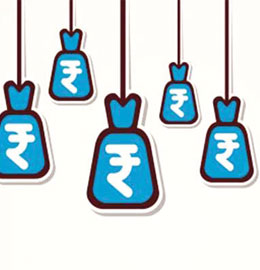Rural banking requires an innovative approach for better delivery of services in remote areas as it involves a large number of small- value transactions, says Gitanjali Mishra, General Manager, Payment Bank Initiatives, State Bank of India, in an interaction with Arpit Gupta of Elets News Network (ENN)

General Manager, Payment
Bank Initiatives, State Bank of India
What are the initiatives undertaken by the State Bank of India in terms of Financial Inclusion?
The State Bank of India has been involved in extending banking facilities to rural areas, prior to such requirement becoming mandatory for banks. It is an active participant in financial inclusion programmes having a pan-India presence. SBI is functioning as a state-level bank committee convener in 11 states and a union territory.
The bank has also extended its network in rural and semi-urban areas in India by setting up a large number of branches. The number of rural branches has increased from 6,056 from March 31, 2014, to 6,254 as of March 31, 2015, and to 6,271 as of September 30, 2015.
Rural banking requires an innovative approach for a better delivery of services in remote areas to a population with high illiteracy rates, a large number of small-value transactions.
In order to cater to the rural customer’s needs, the bank has developed alternative delivery channels for banking services and products through the Business Correspondent (BC) model. As of September 30, 2015, the bank had engaged over 58,000 customer service points of business correspondents in rural areas.
Pursuant to the Pradhan Mantri Jan Dhan Yojna (PMJDY) scheme launched on 15th August 2014, the bank opened 44.5 million accounts up to 30th September 2015 and issued 38.43 million RuPay debit cards to eligible customers as of September 30, 2015. The number of Basic Savings Banks Deposit/Small accounts has also grown from 35.3 million in March 2014 to 72.9 million in March 2015, and to 85 million in September 2015. The value of transactions handled through BCs has increased by 73 per cent from ` 225.25 billion in fiscal 2014 to ` 389.73 in fiscal 2015, and to ` 294.14 billion in the six months ended September 30, 2015.
 Give us a brief about the new customer-friendly products/services introduced by SBI in the financial inclusion market?
Give us a brief about the new customer-friendly products/services introduced by SBI in the financial inclusion market?
In financial inclusion market, the remittances and savings bank accounts are the most popular products. In remittance space, we are focusing on enabling interoperable platforms like Immediate Payment Service (IMPS) and Aadhaar Enabled Payment System (AEPS). While in savings bank space, we are looking at ways to enable passbook printing, enhancing features under Recur – ring Deposit (RD)/Fixed Deposit (FD) to make it more customer-friendly.
What are the new technologies introduced in the Financial Inclusion and Payments System domain in the industry?
Enabling access to quality financial inclusion services at affordable prices, delivered with convenience and dignity, can change the course of an individual household’s future. The coming years will see a more integrated cohesive approach between financial service providers, policy makers, regulators, technology providers to realise full financial inclusion in the country. We are seeing the rapid progress made under Pradhan Mantri Jan-Dhan Yojana (PMJDY) and Direct Benefit Transfer (DBT) schemes.
The bank’s continued focus on the development of innovative, technology-enabled channels for delivering banking services to the rural population has resulted in the launch of a number of new initiatives, including AEPS, automated e-KYC, IMPS, Micro ATM and Cash at POS roll out at CSP/retail outlets, SB-OD facility under PMJDY and enabling infrastructure for DBT/ DBTL payments. The bank is also the sole sponsor for Direct Benefits Transfer for LPG subsidy (DBTL) – world’s largest account-based subsidy transfer programme, and has handled over 840 million DBTL transactions in a short period of time from November 15, 2004, to September 30, 2015.
To what extent technologies help SBI to build a strong relationship with customers and ensure loyalty?
Mobility is important as cost of smartphones have gone down dramatically over the years. Ease of accessing the bank anytime anywhere through alternate channels (mobile/tab/PC) clubbed with specific products targeting an individual’s needs is vital to ensure customer stickiness.
Smart use of technology by way of data analytics, credit reporting/forecasting helps us to gauge the behaviour and target potential customers across the demographic/economic divide. Data analytics plays a larger role for tailor-made banking products to suit individual customers. Credit reporting tools and forecasting credit behaviour helps make lending to FI customers easy .
We are also in process of implementing low-cost quality-oriented service delivery platforms for FI customers. Banking delivery channels will shift from desktop/PC-based to more mobility-based (Tab banking/Android-based smartphone/NFC and App based).
How do you leverage social media and analytics in offering customer satisfaction?
Social media has the potential to enhance usage of financial services through information sharing, influencing user behavioural patterns, direct marketing of financial services.
Data analytics tools, credit reporting tools and forecasting credit behaviour helps make lending to FI customers easy. As more and more unbanked customers started coming to the realms of banking, social media will play a big role in staying connected with them.
Social media has the potential to enhance usage of financial services through information sharing, influencing user behavioural patterns, direct marketing of financial services, etc
What are your expansion plans for future?
Our future plans are to strengthen BC channel by (i) drastically enhancing no. of touch points & (ii) making lot more services available through BC channel. We are also looking at usage of wallets by all segments of customers. Customer-driven transactions will see an increase leading to cost reduction for banks. The bank branch will be free to include more value-added services, asset gathering and focus on quality controls. BC will start moving up the value chain, handling more of credit info gathering, along with value-added services and will become a hub of knowledge dissemination centres.
All in all, the aspirational India, at age group of 15 to 45, will break the barrier of financial untouchability. The banks will have a major role to play as these continuously have to engage in FI space. Financial Inclusion will no more be a government-driven initiative, rather banks will move to treat it as a profitable vertical.
Elets The Banking and Finance Post Magazine has carved out a niche for itself in the crowded market with exclusive & unique content. Get in-depth insights on trend-setting innovations & transformation in the BFSI sector. Best offers for Print + Digital issues! Subscribe here➔ www.eletsonline.com/subscription/




















